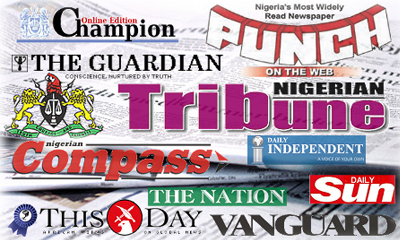ISAAC ASABOR
As artificial intelligence (AI) becomes increasingly integrated into industries worldwide, its impact on media relations in Nigeria is starting to take shape.
From streamlining communication processes to enhancing engagement, AI presents a powerful opportunity to transform how media professionals and public relations (PR) practitioners operate in the country’s fast-paced and ever-evolving media landscape.
For a country like Nigeria, where news cycles move swiftly and the influence of social media is growing, AI-driven tools can revolutionise how PR professionals manage media relationships, monitor trends, and respond to breaking stories.
Here is a look at what media relations in Nigeria stand to gain from AI, with insights from seasoned professionals in the field.
One of the most immediate benefits AI brings to media relations is increased efficiency.
Tasks that once took hours or even days, like drafting press releases, media monitoring, or compiling reports, can now be automated.
AI-powered tools can analyse news coverage, track mentions, and monitor conversations across social media in real-time, helping media professionals stay on top of trends.
According to Bisi Odugbemi, a senior media relations consultant at a Lagos-based PR firm, “AI has changed the way we monitor the news cycle.
What used to take a team of analysts hours can now be done in minutes. We can track mentions, sentiment, and media coverage at a scale we never thought possible.”
This efficiency extends to content creation as well. AI-powered writing assistants can help PR professionals quickly draft and optimise press releases or media statements, freeing up time for more strategic tasks. Media lists can also be managed more effectively, with AI curating contacts based on relevance and recent activity.
In Nigeria’s dynamic media environment, monitoring what is being said about a brand, organisation, or government figure is crucial.
AI tools can automate this process by providing comprehensive insights into coverage across digital, print, and broadcast media. Through natural language processing (NLP) and machine learning, these tools can identify key trends, categorise stories by sentiment, and even predict potential crises based on early signals.
Expressing her take from a similar perspective, Amaka Udo, a public relations strategist, highlights the importance of these capabilities: “With AI, we don’t just get surface-level media monitoring anymore. We get predictive insights. If a negative story is gaining traction, AI tools can alert us in advance, giving us a window of opportunity to respond before it becomes a full-blown crisis.”
For media relations professionals handling multiple clients or projects simultaneously, these AI-powered insights help maintain a bird’s-eye view of public sentiment while offering the ability to dive deep into specific stories or issues. This agility is key to staying ahead in Nigeria’s fast-moving media environment.
AI allows media relations professionals to engage with journalists and media outlets more effectively.
Rather than sending generic press releases to mass audiences, AI tools can analyze a journalist’s previous work, their areas of interest, and even their engagement levels on social media to craft personalized pitches.
Advertisement
Still in a similar vein, Ngozi Ebube, a media relations manager, shares how AI tools have helped her team.
“We used to rely on broad media lists and hoped the right journalist would pick up our story. Now, we use AI to analyse past coverage and tailor our pitches to the right people. It increases the likelihood of getting a story picked up and strengthens our relationships with journalists.”
This personalisation goes beyond media pitching. AI can help PR professionals track ongoing conversations around particular topics, allowing them to position their clients or organisations within those narratives more effectively.
With AI’s ability to process massive amounts of data, professionals can seize opportunities in real-time, ensuring that they stay relevant in a rapidly changing media environment.
Crisis management is one of the most challenging aspects of media relations, especially in Nigeria, where the news cycle can shift quickly due to political, economic, or social factors.
AI-powered tools can predict crises before they escalate by analyzing patterns in media coverage, social media conversations, and public sentiment.
Olumide Awoyemi, a crisis communication expert, in his view, explains, “In today’s digital age, a story can blow up in minutes, and without the right tools, you are reacting instead of being proactive. AI helps us track potential crises before they reach their peak, allowing us to craft a response that can mitigate damage.”
AI chatbots can also play a role in managing crises, handling routine inquiries from the media, or responding to common questions from the public, freeing up PR teams to focus on more critical strategic responses.
This real-time capability is crucial for managing breaking news or rapidly developing situations.
In an era where data is king, AI empowers media relations professionals to make informed decisions backed by accurate data. By analysing previous campaigns, media coverage, and social media trends, AI can provide insights that help refine PR strategies and identify what works.
Kemi Olatunji, a media relations expert, says, “Before AI, much of our decision-making was based on experience and gut instinct. Now, we have the data to back it up. AI tools give us real-time feedback on how our press releases are being received, what stories are gaining traction, and how we can improve our communication strategies.”
With data-driven insights, PR professionals can allocate resources more effectively, identify the right media outlets for specific stories, and even predict the success of their outreach efforts. This not only improves campaign outcomes but also ensures that the media relations industry in Nigeria keeps pace with global standards.
While AI holds great potential for improving media relations, it is not without its challenges. Some professionals are concerned about over-reliance on automation and the possibility of AI tools missing the nuance in media relations, particularly in a country like Nigeria where cultural and social sensitivities are essential.
Kunle Adepoju, a PR veteran, warns, “AI can make things more efficient, but media relations is still about human connections. You can’t fully automate relationships. AI should complement our work, not replace the personal touch that builds trust between PR professionals and journalists.”
Ethical considerations also come into play. AI tools must be used responsibly to ensure that data privacy is maintained, and professionals need to guard against the manipulation of AI-generated insights for disingenuous purposes.
AI is poised to play a transformative role in Nigeria’s media relations landscape. From streamlining workflows to providing data-driven insights and enhancing crisis management, AI tools offer immense potential to elevate the practice of media relations.
However, as professionals like Adepoju remind us, AI should be seen as a tool that enhances, not replaces, the human touch in the PR industry.
As the technology continues to evolve, Nigeria’s media relations practitioners must embrace AI’s potential while maintaining the personal, ethical, and strategic elements that have always been at the core of effective communication.











